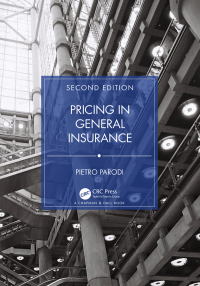You are an actuary for a commercial lines insurance company. One of your jobs is to set
Question:
You are an actuary for a commercial lines insurance company. One of your jobs is to set the annual aggregate deductible (hence ‘the aggregate’) for commercial policies at a level that is satisfactory for clients and is breached with a likelihood of less than or equal to 5%. The policy you have been asked to price is a public liability policy with a straightforward structure – a (ranking) EEL deductible of £100k, an annual aggregate deductible (to be determined), and an EEL limit of £25M.
i. Explain what the annual aggregate deductible is, and what its purpose is from the client’s perspective.
ii. Explain how the aggregate works and show the calculations in practice with this simple numerical example: EEL = £100k, aggregate = £300k, and these four losses in a year: £80k, £120k, £70k, and £150k.
You have produced a stochastic loss model (gross of any deductible/limit)
based on the frequency/severity approach. The model is based on an analysis of, for example, 10 years of historical losses.
iii. Illustrate how you would use the stochastic loss model thus constructed to set the aggregate at an acceptable level.
iv. Describe how you would calculate by how much the expected ceded losses would increase as a result of imposing the aggregate as for Step iii.
v. Illustrate how a burning cost analysis could be used for the purpose of setting the aggregate at a suitable level (i.e. AAD breached with a likelihood of ≤5%).
vi. Explain the relative merits of the stochastic (iii) and burning cost (v) approach to calculating a suitable aggregate.
Step by Step Answer:






